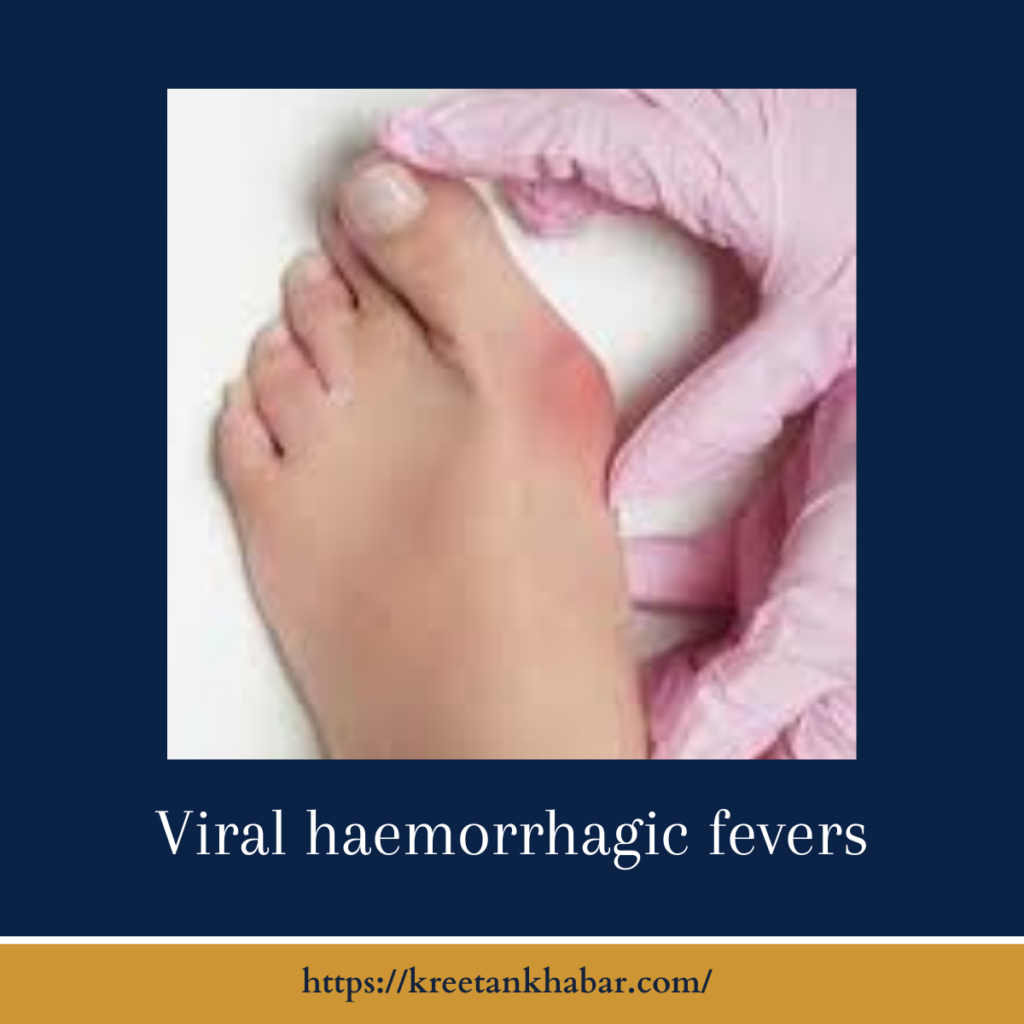Viral Hemorrhagic Fevers: A Closer Look at Symptoms, Transmission, and Global Health Impact
Introduction:
Viral hemorrhagic fevers (VHFs) stand as a formidable group of infectious diseases, shrouded in mystery and characterized by severe symptoms, including fever, fatigue, and, in advanced cases, hemorrhagic manifestations. This diverse family encompasses notorious viruses such as Ebola, Marburg, Lassa, and more, each presenting unique challenges to global health. In this exploration, we delve into the intricate landscape of VHFs, unraveling the nuances of their symptoms, modes of transmission, preventive measures, and the ongoing efforts in research and vaccine development to mitigate their impact on public health.

Symptoms and Clinical Features:
VHFs are known for their severe and often life-threatening symptoms. The initial stages may mimic flu-like symptoms, with fever, muscle pain, and fatigue. As the disease progresses, patients may experience bleeding tendencies, which can manifest as bleeding from the gums, nose, or internally. The severity of symptoms underscores the urgent need for effective prevention and treatment strategies.
Modes of Transmission:
Understanding the modes of transmission is crucial in developing preventive measures. Many VHFs originate from zoonotic transmission, where humans come into contact with infected animals or their bodily fluids. Additionally, certain viruses are transmitted by arthropod vectors like mosquitoes or ticks. Equally concerning is the potential for person-to-person transmission, especially within healthcare settings or among close contacts.
Global Health Impact:
VHFs pose a significant global health concern due to their potential for rapid transmission and high mortality rates. Outbreak dynamics can overwhelm healthcare systems and public health infrastructure, necessitating swift and coordinated responses on an international scale. The interconnectedness of our world requires vigilance and collaboration to prevent, detect, and manage outbreaks effectively.
Preventive Measures:
Preventing the spread of VHFs involves a multi-faceted approach. Strict infection control practices, including the use of personal protective equipment, are vital, especially in healthcare settings where the risk of person-to-person transmission is high. Vector control measures, such as mosquito netting and insecticides, play a crucial role in regions where arthropod-borne viruses are prevalent. Public health education and community engagement contribute to awareness and proactive measures.
- Infection Control Practices:
- Rigorous infection control practices, including the use of personal protective equipment, are crucial in preventing the spread of viral hemorrhagic fevers, especially in healthcare settings.
- Vector Control Measures:
- Implementing effective vector control measures, such as the use of mosquito nets, insecticides, and environmental management, helps reduce the risk of arthropod-borne viruses.
- Public Health Education:
- Public health education plays a pivotal role in preventing viral hemorrhagic fevers. Informing communities about the modes of transmission, symptoms, and preventive measures fosters awareness and proactive actions.
- Community Engagement:
- Engaging communities in preventive efforts enhances the effectiveness of control measures. Encouraging practices that reduce contact with potential sources of infection and promoting early reporting of symptoms contribute to community resilience.
- Quarantine and Isolation:
- Implementing quarantine and isolation measures is essential to contain outbreaks and prevent person-to-person transmission. This is particularly crucial in healthcare settings and areas experiencing outbreaks.
- Surveillance and Early Detection:
- Surveillance systems for early detection of cases and monitoring potential outbreaks are instrumental in preventing the spread of viral hemorrhagic fevers. Timely identification allows for swift response and containment.
- Research into Vaccines:
- Investing in research for vaccines is a long-term preventive strategy. Developing effective vaccines that provide immunity against specific viral hemorrhagic fevers is critical for reducing the incidence and impact of these diseases.
- Travel Advisory and Restrictions:
- Issuing travel advisories and, if necessary, imposing restrictions during outbreaks helps prevent the geographical spread of viral hemorrhagic fevers, limiting the risk of transmission to new regions.
- Safe Burial Practices:
- Implementing safe burial practices is essential to prevent the transmission of viral hemorrhagic fevers, as these diseases can persist in bodily fluids after death. Adhering to proper burial protocols reduces the risk of secondary infections.
- International Collaboration:
- Collaboration on an international scale is indispensable for preventing and managing viral hemorrhagic fevers. Sharing information, resources, and expertise facilitates a coordinated response to outbreaks, transcending geographical and political boundaries.
Treatment Challenges and Research Efforts:
Treatment options for VHFs are limited, often focusing on supportive care, fluid management, and symptom relief. The urgency of developing effective antiviral medications and vaccines has spurred ongoing research efforts. Scientists worldwide are working tirelessly to unravel the complexities of these viruses, understand their virology, and identify targets for intervention. The ultimate goal is to develop vaccines that can prevent the occurrence and mitigate the impact of VHFs.
Conclusion:
Viral hemorrhagic fevers remain a formidable challenge to global health, necessitating a comprehensive and collaborative approach. From understanding the intricate symptoms to implementing stringent preventive measures and investing in research for treatment and vaccines, the collective efforts of the global community are essential. As we navigate this complex terrain, staying informed, promoting public awareness, and fostering international collaboration are crucial steps in our ongoing battle against the threat posed by viral hemorrhagic fevers.
Read also : Exploring the Delightful Boost of the Green Tea Shot 2023